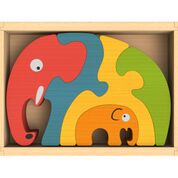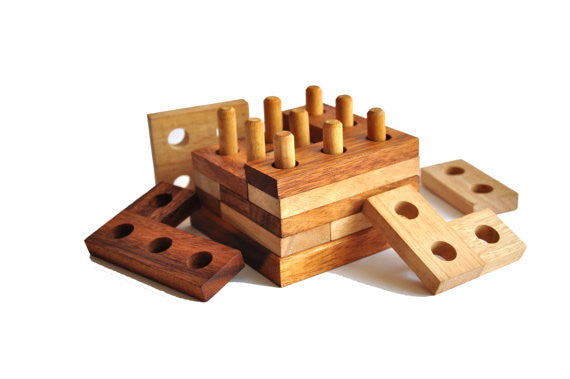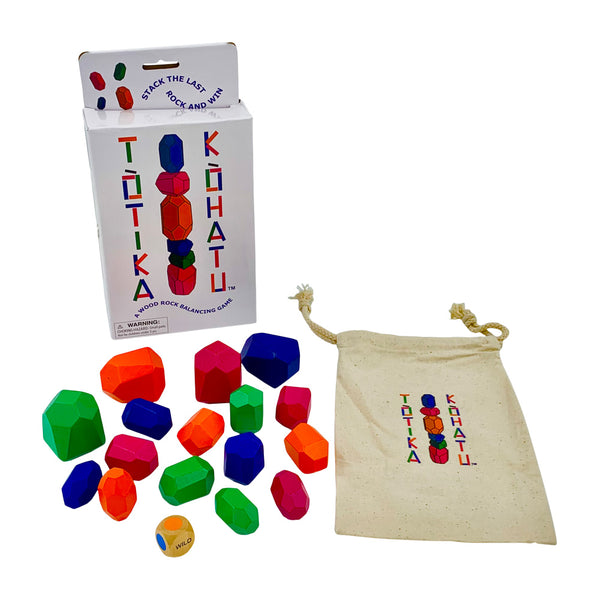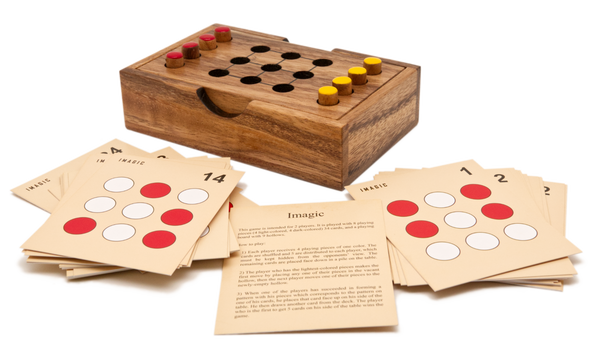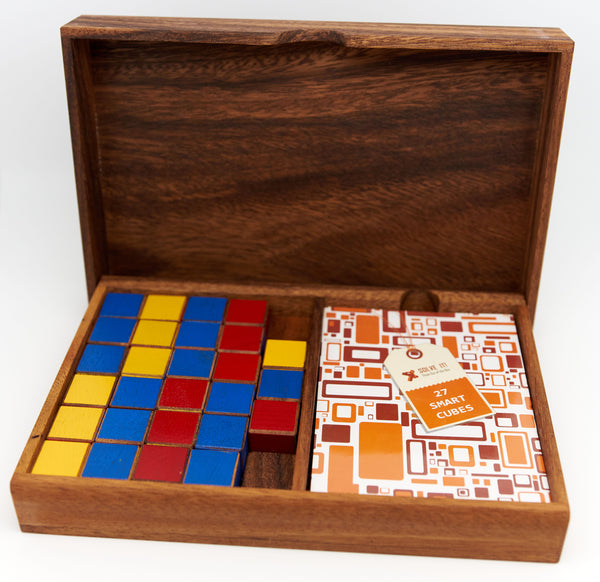Elephant Family Puzzle
Sold Out
The Elephant Family Puzzle is a great first puzzle and helps develop fine motor and problem solving skills. Easy clean up with the wooden storage box that is included. This puzzle is beautifully crafted from sustainably harvested rubber wood and finished with water based stains. Ages 2+
Related Items
Imagine Wooden Puzzle Brain Teaser
Sold Out
Imagine Wooden Puzzle Brain Teaser
The Imagine game is the new challenge for those who love Cube Puzzle
The goal is to put back all the different pieces in the cube.
Also really good for children. They can create, imagine what they want!
Totika Kohatu - Woods Rocks Stacking Balance Game
$42.50
Totika Kohatu is a traditional Maori competition played by stacking stones as high as possible on beaches, near rivers or other places with rocks. Totika Kohatu is a tabletop wood rock stacking game that will determine, once and for all, who has the steadiest hand and nerves of steel. Knock the stack over on your turn and lose that round of play.
Four card decks, each with over 150 questions, including Self Esteem, Life Skills and Anger for ages 8 and up plus the Early Childhood Social Emotional deck for ages 4-7. The drawstring game bag holds all four decks, the 16 Kohatu stones plus a game dice. Choking hazard not appropriate for under age 3.
- Players take turns rolling the die and balancing one rock of the rolled color on top of the stack. Knock over the stack and lose that round of play. Stack the last rock and win. Win a round by successfully stacking the 16th stone. Sounds easy until everyone realizes stacking all 16 stones is nearly impossible but believe us, it’s possible. Don’t give up. Keep practicing and build your skills.
- Although it looks simple at first, the difficulty of stacking all 16 rocks, stones and gems becomes apparent and players are gradually mesmerized by the surprising height of the stack, much more mindful of their movement around the table as the stack grows taller and excitement builds.
- Totika Kohatu wood rocks are irresistible and they are going grab and hold the attention of children, teens and adults. No set up and each round is quick, 3-5 minutes without the question cards and 5-15 minutes when using question cards. Four card decks, each with over 150 questions, including Self Esteem, Life Skills and Anger for ages 8 and up plus the Early Childhood Social Emotional deck for ages 4-7.
- Includes: The drawstring game bag holds all four decks, the 16 Kohatu stones: 4 large stones, 8 medium rocks, 4 small gems and plus a game dice. Choking hazard not appropriate for under age 3.
- Instructions and improved, non-glossy blank cards that are very easy to write on and to erase pencil.
Imagic
$21.99
This Imagic strategic game is intended for 2 players. It is played on board with 9 hollows. It includes 8 pegs (4 yellow and 4 red) and 34 cards.
How to play:
1) Each player receives 4 playing pieces of one color. The cards are shuffled and 5 are distributed to each player, which must be kept hidden from the opponents’ view. The remaining cards are placed face down in a pile on the table.
2) The player who has the lightest-colored pieces makes the first move by placing any one of their pieces in the vacant hollow, then the next player moves one of their pieces to the newly-empty hollow.
3) When one of the players has succeeded in forming a pattern with his pieces which corresponds to the pattern on one of his cards, he places that card face up on his side of the table. He then draws another card from the deck. The player who is the first to get 5 cards on his side of the table wins the game.
27 Smart Cubes
$39.99
27 Smart CUBES is BUILD-UP GAME
inspired by Boris Nikitin's "Unicube", providing a chance for you, whether you are a child or an adult, to:
- Better develop your sense of observation.
- Train your 3D spatial perception.
- Strengthen your concentration.
- Enhance logical thinking.
- Be more creative.
- Be more patient.
Product description
The idea is to put together up to 27 wooden cubes, each with a different combination of primary colors, according to sequences of gradually increasing difficulty, ranging from simple to complex.
Begin with placing the cubes into simple shapes and color patterns. Then, move onto more difficult tasks involving 3D shapes and complex color schemes using all 27 cubes.
Fun for All Ages.
To be used in preschools, elementary schools, and even senior homes.

